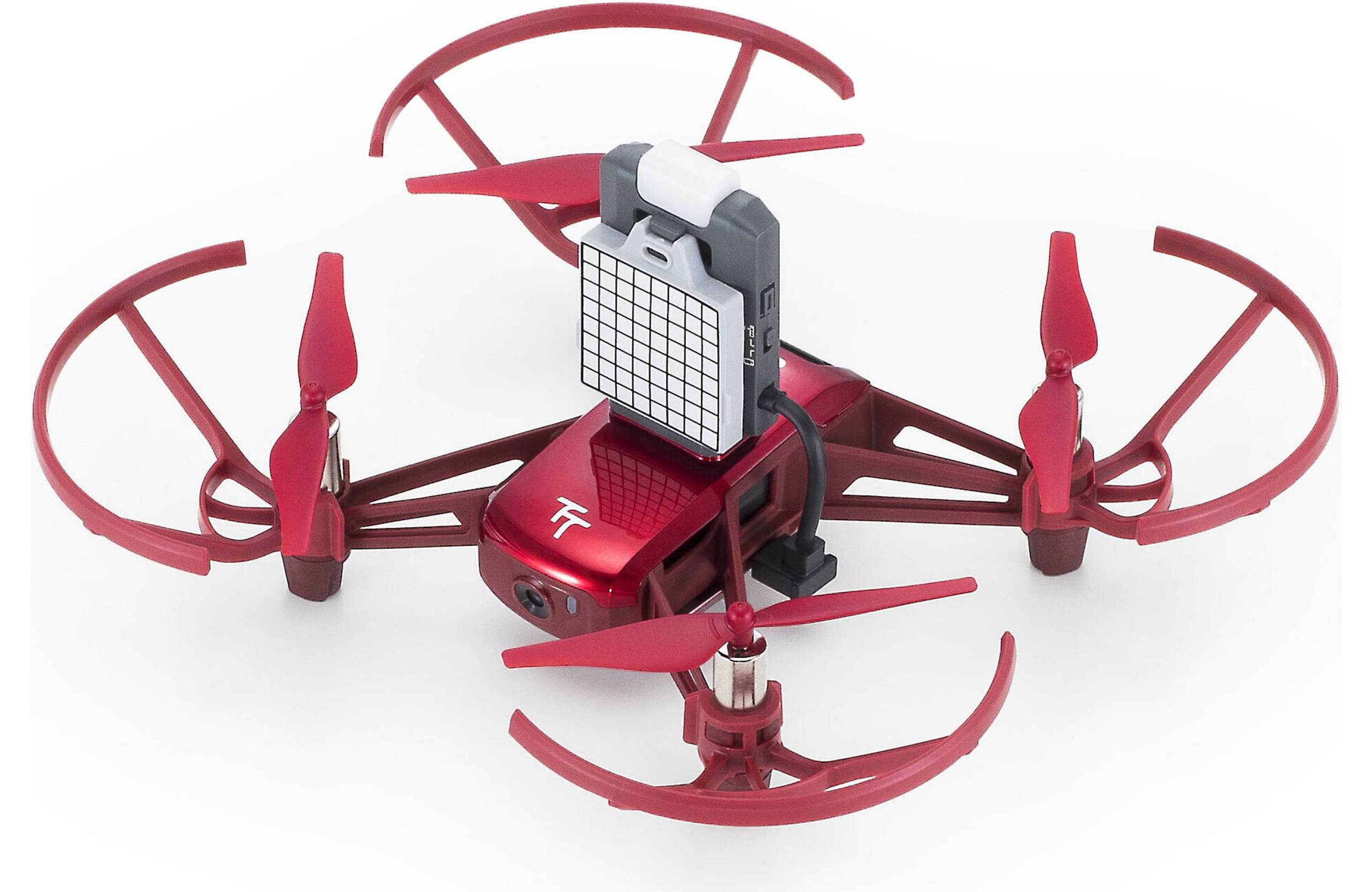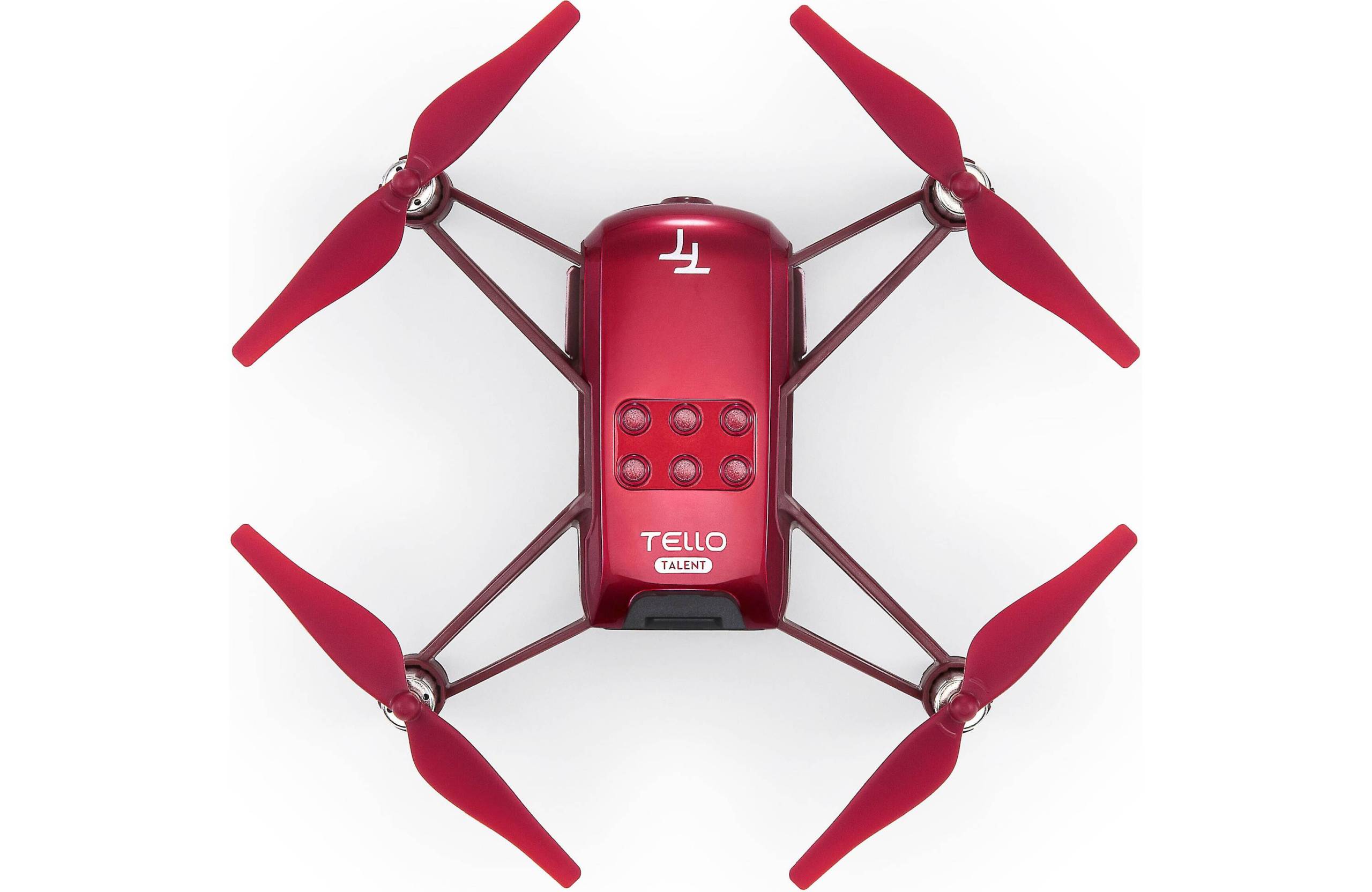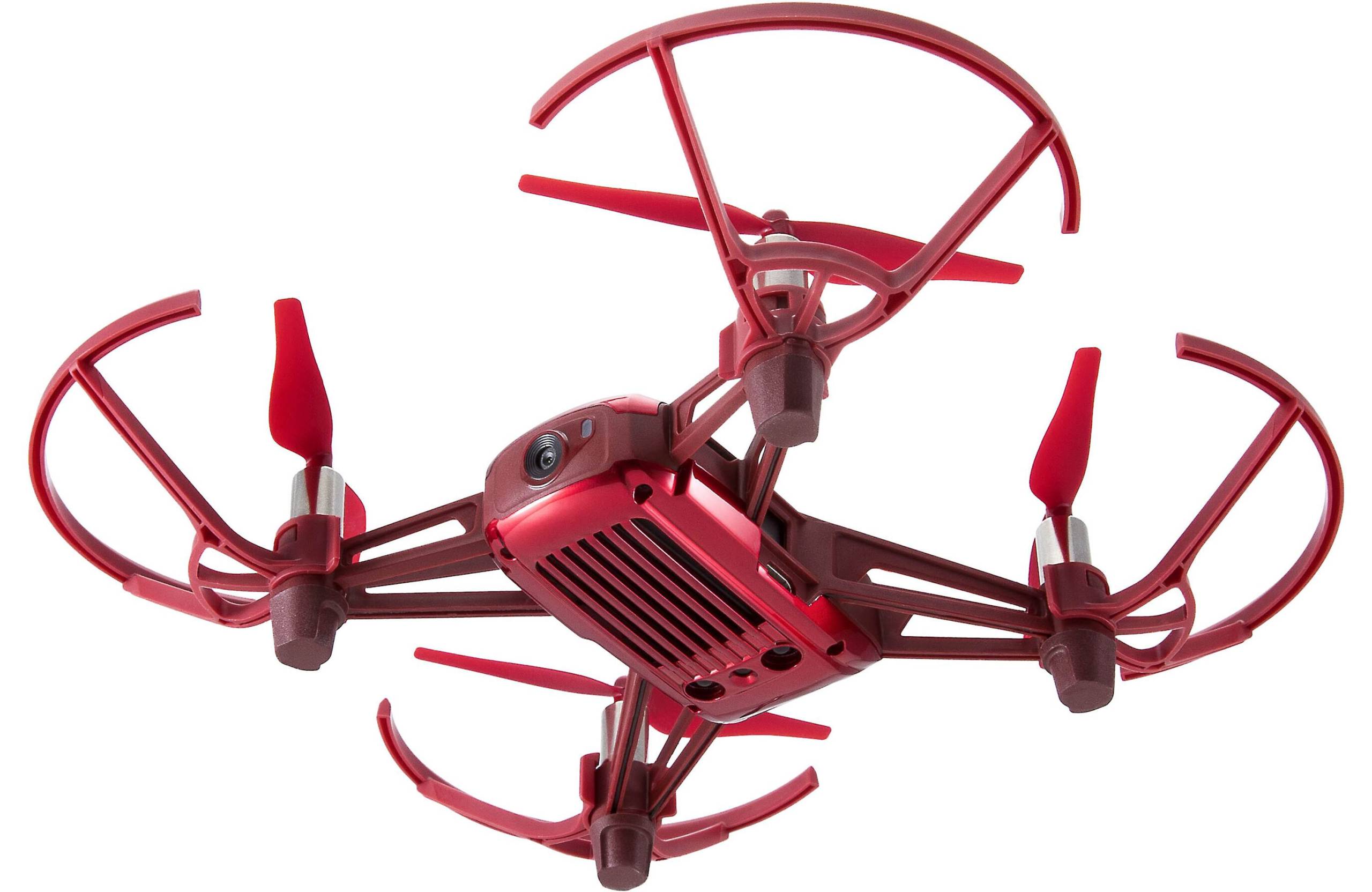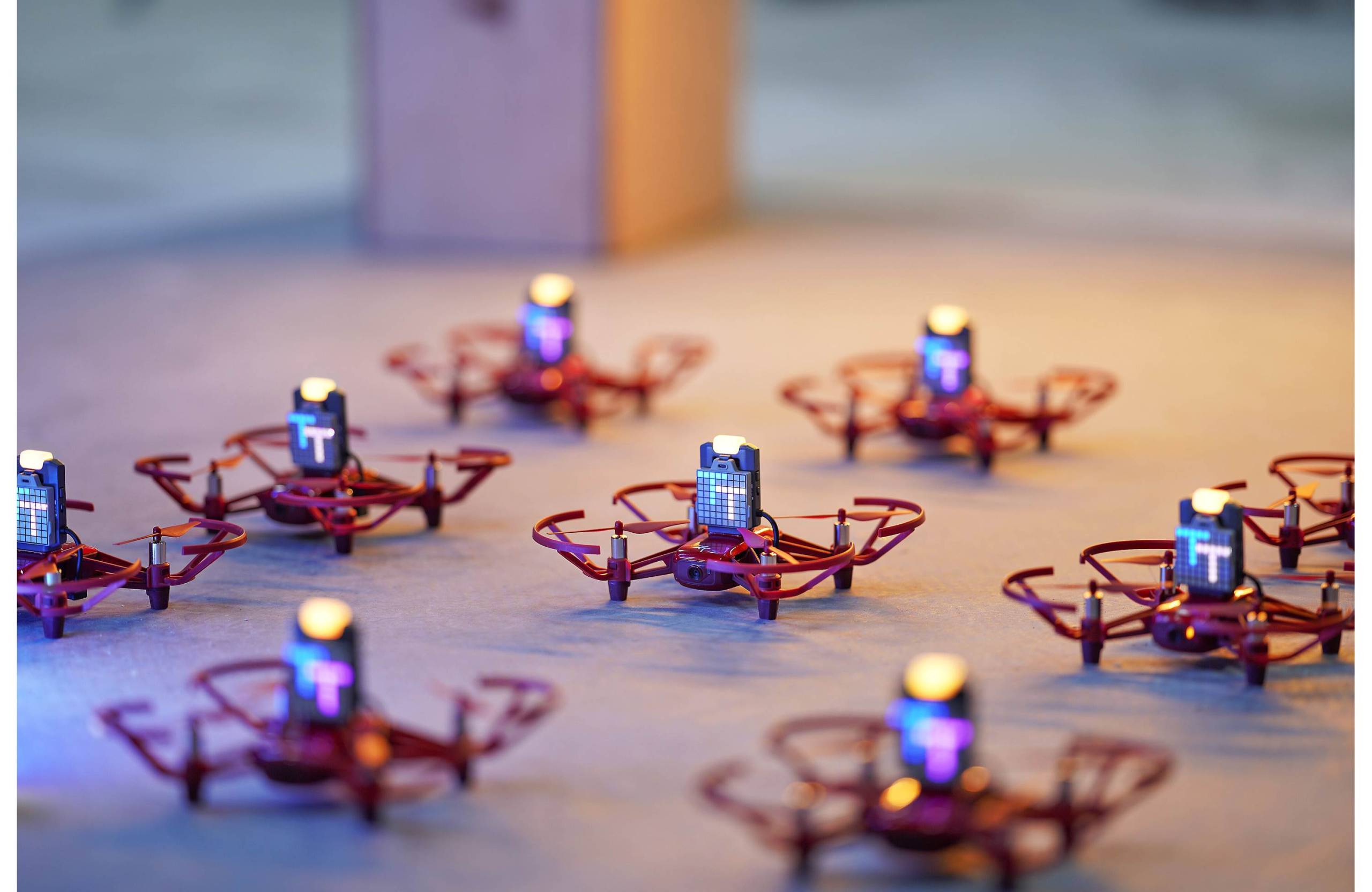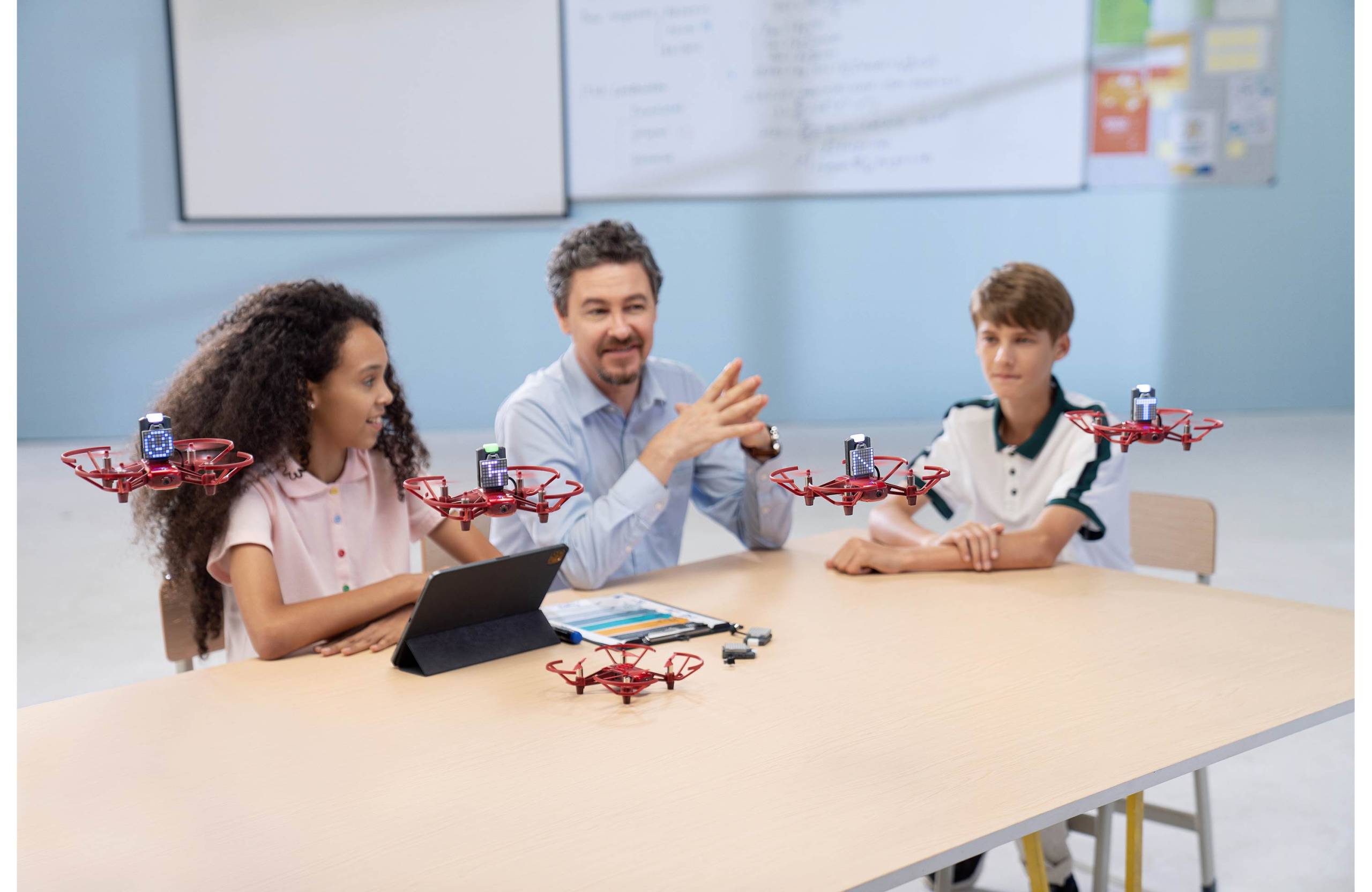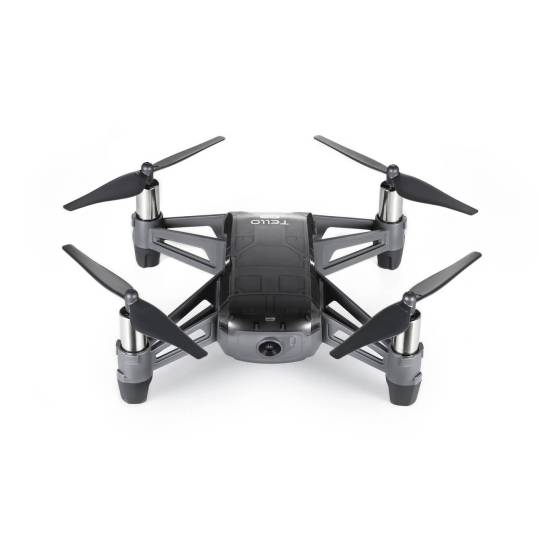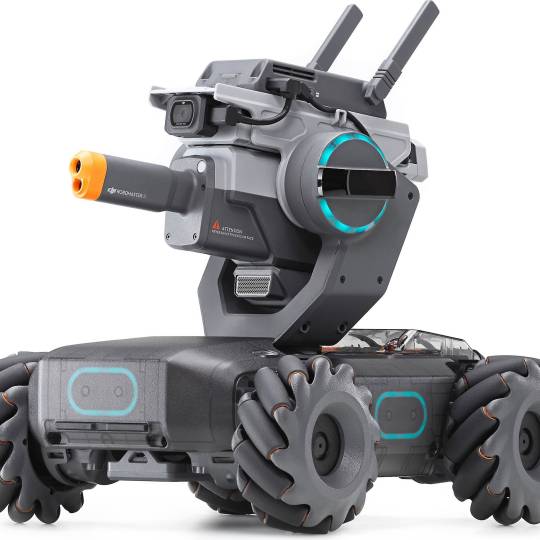Description
As an educational drone developed by DJI Education, RoboMaster TT is committed to lowering the threshold for robot and AI learning, and cultivating students’ curiosity and self-confidence during their first contact with science and technology education. To meet this goal, RoboMaster TT embraces open source and has been upgraded on the basis of Tello EDU to facilitate multi-drone control and AI applications through excellent software and hardware scalability. In addition, RoboMaster TT provides complete drone and AI courses and a new competition system to create a new experience in robotics education and fully stimulate students’ creativity.
Product highlights:
- compact aerial quadcopter with HD camera designed for drone and AI education
- includes open-source controller with LED light and dot-matrix screen
- works with Tello and Tello EDU apps
- drone swarm: program and control multiple RoboMaster TT drones at time
- stable dual-band W-Fi keeps you connected (2.4 GHz/5.8 GHz)
- obstacle-sensing technology helps avoid collisions
- lands safely and automatically if you lose connection
- low battery indicator lets you know when it’s time to land
- flies up to 17.9 miles per hour
- maximum flight distance: 328 feet
- maximum flight height: 98 feet
- flight time: 13 minutes (drone); 8.5 minutes (controller and screen installed)
Camera:
- takes 5-megapixel stills and shoots 720p/30fps video
- field of view: 82.6°
- electronic image stabilization keeps your video and stills looking sharp
Educational features:
- open-source RoboMaster SDK (software development kit) based on Python 3.0
- supports graphical programming, Arduino, MicroPython, Scratch, and other programming methods
- controller with built-in ESP32 chip mounts to the drone
- supports AP (Access Point) and Stations Modes
- 14-pin (2×7) extension board lets you connect, debug, and supply power to third party sensors for additional drone applications
- supports I2C, UART, SPI, GPIO, and PWM sensor interfaces
- Station Mode lets you connect multiple RoboMaster TTs to the same Wi-Fi router and control them
- use included mission pads as guide points and trigger mechanisms
- LED indicator can be programmed to change color and flashing frequency
- 8×8 programmable dot-matrix screen connects to open-source controller
- adjustable overall and single-LED brightness
- infrared ToF (time-of-flight) sensor accurately determines distances up to 3.9 feet
- includes built-in barometer
- DJI Education offers drone and AI courses designed to facilitate interdisciplinary, practical learning
- AI competitions supported by a diverse rules library build critical thinking and problem solving
General features and included accessories:
- charges via standard micro USB power adapter (cable and rechargeable battery included)
- includes propeller guards
- two pairs of replacement propellers
- drone: 3-7/8″W x 3-5/8″H x 1-5/8″D
- open-source controller: 1-15/16″W x 1-1/4″H x 5/8″D
- dot-matrix screen: 1-3/8″W x 1-1/4″H x 5/16″D
- weight: 3.06 oz. (drone); 3.5oz. (controller and screen installed)
- warranty: 6 months
- Note: The FAA offers the most up-to-date information on safety tips, rules, and regulations for responsible drone use. Many drones need to be registered, and state and/or local laws may restrict their use in some areas.
Features
RoboMaster TT RoboMaster TT Talent: As an educational drone developed by DJI Education, the RoboMaster TT is committed to lowering the threshold for robot and AI learning, and cultivating students’ curiosity and self-confidence during their first contact with science and technology education. To meet this goal, RoboMaster TT embraces open source and has been upgraded on the basis of RoboMaster TT EDU to facilitate multi-drone control and AI applications through excellent software and hardware scalability. In addition, RoboMaster TT provides complete drone and AI courses and a new competition system to create a new experience in robotics education and fully stimulate students’ creativity.
- High-performance mechanical accessories with powerful compatibility features and abilities provide introduction to real-world AI implementation.
- Available project-based courses that are suitable for multiple grade levels align with curriculum standards.
- Plus, competition rules and operations plans with customizable competition are arranged for practical hands-on learning.
Safety-First Design: As the industry’s leading educational drone, RoboMaster TT delivers powerful flight performance with a compact footprint, and uses the cutting-edge DJI flight control algorithms to ensure flight safety and stability. The RoboMaster TT adopts a safety-first design and incorporates the following physical and software protection methods to ensure user flight safety – blade protection, precise hovering, and low-battery alarming. The included propeller guards can be used to reduce the risk of harm or damage to people or objects resulting from accidental collisions with RoboMaster TT aircraft.
- Vision Positioning System: The Vision Positioning System helps the RoboMaster TT aerial mini-drone to maintain its current position. With the help of the Vision Positioning System, the RoboMaster TT can hover in place more precisely and fly indoors or outdoors in windless conditions. The main components of the Vision Positioning System are a camera and a 3D infrared module located on the underside of the aircraft.
- Auto Take-Off & Landing: There are two auto landing modes – Tap to Land and PalmLand. In Tap to Land mode, the aircraft lands automatically. To use the PalmLand mode, place your palm under the aircraft, then tap to confirm and the aircraft will land on your palm and stop its motors. Only land the aircraft on flat surfaces. Do not land the aircraft over water, grass or sand. When using PalmLand, ensure your palm is right under the aircraft and keep your palm flat.
- Dual-Band WiFi Module: The RoboMaster TT uses a new dual-band WiFi module, which features a lower signal transmission delay and better anti-signal-interference performance. This dual-band wireless module supports 2.4-GHz/5.8-GHz communication, which greatly improves the stability of the drone connection and enables the drone to better adapt to its environment. The drone can fly smoothly in complex WiFi environments. In the classroom teaching scenario, more drones can be connected simultaneously than before, and the stability of multi-drone formation is enhanced.
Note: The Vision Positioning System is activated automatically when the aircraft is turned on. No further action is required. The Vision Positioning System is only effective when the aircraft is at altitudes of 1′-32.8′ (0.3-10 m) and works best at altitudes of 1′ to 19.7′ (0.3 to 6 m). If the aircraft is beyond this range, the Vision Positioning function may be affected, so extra caution is required.
Simple Control: You can control the RoboMaster TT mini-drone directly via the Tello app (for Apple iOS 9.0+ and Android OS 4.4+) on your compatible Apple iOS or Android device. Use the Tello app to control the aircraft’s flight pattern, record videos, capture photos, and update firmware. In addition to the Tello app on your compatible Apple iOS or Android device, you can control the RoboMaster TT from a supported Bluetooth remote controller connected to the Tello app on your mobile device. Compatible Bluetooth remote controllers include the GameSir T1d controller (964TELLREM, sold separately). The GameSir T1d controller still uses your mobile device as your flight screen.
- Manual Mode: In manual mode, the Tello apps virtual joysticks are used to control the aircrafts orientation (yaw), forward/ backward movement (pitch), altitude (throttle), and left/right movement (roll). The RoboMaster TT has two flight speeds (Slow or Fast) that you can select when flying the aircraft manually. The Slow mode offers a maximum flight attitude angle of 9° and a maximum flight speed of 8.9 mph (14.4 kph). The Fast mode provides a maximum flight attitude angle of 25° and a maximum flight speed of 17.8 mps (28.8 kph).
- Intelligent Flight Modes: Intelligent Flight Modes include Bounce mode, 8D Flips mode, and Throw & Go mode. In Bounce mode, the aircraft automatically flies up and down between 1.6′-3.9′ (0.5-1.2m) above a flat surface. If the aircraft detects an object below it (such as your hand) it increases its altitude then continues flying up and down. In 8D Flips mode, the aircraft automatically flips in one of eight different directions. The Throw & Go mode lets you launch the aircraft by gently throwing it into the air. To use an Intelligent Flight Mode, ensure that the aircraft’s battery level is at least 50%.
- Attitude Mode: The aircraft automatically changes to Attitude mode (ATTI mode) when the Vision Positioning System is unavailable. In Attitude mode the aircraft is not able to position itself and so is easily affected by its surroundings. Environmental factors such as wind can result in horizontal shifting, which may present hazards, especially when flying in confined spaces. When the aircraft enters Attitude mode, land in a safe place as soon as possible to avoid hazards.
Note: Ensure that all flights are carried out indoors or in an open area with no wind. The flight altitude is limited to 32.8′ (10 m) and flight distance is limited to 328′ (100 m).
Built-in Camera with EZ Shots: The RoboMaster TT’s built-in camera with high-quality image processor captures 2592×1936 (5MP) photos and 1280×720 (720p) videos. The RoboMaster TT’s Electronic Image Stabilization feature enables it to consistently capture clear images. With EZ Shots, you can fly in three specific patterns while recording short videos.
- 360 Mode: In 360 mode, the aircraft records a short video while rotating 360° (degrees).
- Circle Mode: In Circle mode, the aircraft records a short video while flying in a circle.
- Up & Away Mode: In Up & Away mode, the aircraft records a short video while flying upward and backward.
Note: The photos and videos can be viewed in the Tello app and copied to a folder in your mobile device (you can export files from your compatible mobile device as needed). The RoboMaster TT does not offer an internal memory to store photos and videos. It also does not support external memory cards.
Open Source Extension Kit: The built-in ESP32 chip provides the Arduino and Micro Python open source programming environments, and supports the Arduino, Micro Python, graphical programming, and multiple offline programming methods. It creates an open-source flying hardware platform for students and teachers that makes it convenient for students to learn embedded programming and develop various applications of aerial robots. RoboMaster TT’s highly integrated open source extension can be used together with its open camera video stream data to implement more diversified AI applications. In addition, by using the new RoboMaster SDK, cutting-edge AI technologies such as machine vision and deep learning can be used in the classrooms of primary and secondary schools. This makes AI more familiar, and enables learning through play for better results with more fun.
- RoboMaster SDK Based On Python 3.0: With the Python 3.0 RoboMaster SDK, you can easily learn the Python language and program to control drones. You can also use the SDK to create your own applications, implement the interaction between RoboMaster TT and RoboMaster EP, develop your own AI algorithms, and give full play to your creativity.
- Third-Party Sensor Expansion: The RoboMaster TT offers compatibility for third-party sensors. It provides a 2×7-pin 2.54mm in-line package interface, supports the I2C, SPI, UART, and GPIO programming protocols, and provides the 5V/3.3V power supply. With this level of expansion, you can easily add and debug new sensors for more creative ideas. Students can easily expand sensors and develop programs to produce more AI applications. Pro
Programmable Modules & Sensors: The newly added ESP32 open-source module and other programmable modules are combined with a diverse programming environment to create a professional drone education platform that is convenient for both teachers and students.
- Programmable LED Indicator: When using the RoboMaster TT with the RGB full-color LED indicator, you can control the light color and flashing frequency through graphical programming, Python, Arduino, and other programming methods. In this way, the programming result is more intuitive, and the flight effect is more impressive.
- Programmable Dot-Matrix Screen: The RoboMaster TT has an 8×8 red-and-blue LED dot-matrix screen. You can use the graphical programming, Python, Arduino and other programming methods to display various simple patterns, simple animations, or scrolling characters on the dot-matrix screen. On this basis, the dot-matrix screen provides more possibilities for man-drone interaction.
- Integrated ToF infrared Ranging Sensor: The RoboMaster TT is integrated with a single-point ToF sensor, with the maximum measurement distance of 3.93′ (1.2 meters). The drone is suitable for a range of applications in various teaching scenarios, and can implement environmental perception and intelligent obstacle avoidance.
Supported AI Applications: By adding different third-party sensors to RoboMaster TT, you can customize a variety of creative gameplay.
- Environmental Perception: Use the infrared ranging technology and obstacle information data to perceive the environment and draw indoor maps. You can learn about the indoor robot navigation technology and automatic obstacle avoidance.
- Facial Recognition & Auto-Follow: Obtain the video stream for facial recognition and tracking. You can learn cutting-edge AI technologies, such as machine vision, deep learning, and convolutional neural network.
- Gesture Recognition: Use gesture recognition sensors and program the drone to obtain gesture information and control actions of the drone. You can learn how the sensor data is read (where separate sensors are required), and implement man-drone interaction.
- Palm Control: Based on the obtained knuckle movement posture information, develop a program to establish a connection between palm postures and flight actions, and implement palm control (where separate sensors are required). You can understand and learn about microelectronics technology and sensor characteristics.
Multi-Drone Operation: The RoboMaster TT is compatible with multi-drone operation thanks to its Station Mode and Graphical Programming features.
- Station Mode: RoboMaster TT supports the Station mode. Therefore, multiple RoboMaster TT devices can be connected to the same WiFi router, receive programming code instructions, and provide feedback, implementing status synchronization and control of multiple drones. You can use the drone for various purposes during teaching, competition, or performance.
- Graphical Programming: RoboMaster TT supports using graphical programming, Python, and other programming languages for multi-drone formation programming. In addition, students can use the app to easily and quickly set up simple multi-drone formation.
Education Solutions: DJI Education hopes to use cutting-edge technologies to explore everyone’s potential and cultivate talents that lead the future, and make it easy for children to use these technologies. Backed by innovative and powerful cutting-edge technologies, DJI Education has tailored a professional drone education platform for schools and training agencies. In addition, it has developed industry-leading drone and AI education solutions by combining a series of courses and professional competitions, helping bring students into the intelligent flight world.
- Multidisciplinary Integration: The courses integrate science and technology education with mathematics and English, and theoretical learning with practical inquiry, implements the STEAM education approach, and enables students to bring all the learned knowledge together and understand the knowledge thoroughly in the multidisciplinary and interdisciplinary teaching process.
- Project-Base Exploration: By using real-world problems as the context, the courses guide students to take the initiative to explore solutions, cultivate their logical thinking, build their team-work spirit, and improve their problem-solving ability through project-based exploration activities.
- Constructivism: Based on Piaget’s theory of cognitive development, the courses design learning sections that fit the students’ psychological characteristics and cognitive development laws, and combine drone applications with programming skills so that students can learn new knowledge from specific scenarios.
- Interest-Driven: In the courses, students are inspired to learn about drones and programming independently in a pleasant educational environment, creating more possibilities for students in the future.
Note: DJI Education Partners include University of New South Wales, Science Centre Singapore, Honk Kong University of Science and Technology, Southern University of Science and Technology, plus University of Electronic Science and Technology of China.
Drone and AI Competitions: The RoboMaster TT offers drone and AI competitions to make learning more fun.
- AI Competition: Develop a program to control the drone to automatically cross obstacles and select the correct landing position to implement accurate landing based on the image recognition results. Knowledge points for image recognition and PID control.
- Air-Ground Operation: The drone conducts reconnaissance in the air and sends the location information to the unmanned vehicle. The unmanned vehicle automatically arrives at the destination and transports materials. Knowledge points for image recognition, air-to-ground communication, and route planning.
- Maze Race: Develop a program to enable the drone to autonomously explore a way out in a maze with random routes. The maze also contains mission pads with hidden tasks. Knowledge points for indoor positioning, ToF sensor usage, intra-maze searching, and programmable dot-matrix screen.
Rechargeable Battery: The RoboMaster TT is powered by a rechargeable Lithium-polymer (LiPo) battery which provides up to 13 minutes of flight time. You can charge the battery inside the RoboMaster TT via the microUSB port on the aircraft using an external USB/AC power adapter (sold separately). You can charge multiple RoboMaster TT batteries (964RoboMaster TTP1, sold separately) using the RoboMaster TT Battery Charging Hub (964TELLHUB, sold separately) and a USB/AC power adapter (sold separately).
- Capacity: 1100 mAh
- Voltage: 3.8 V
- Energy: 4.18 Wh
Note: Maximum flight time was tested in windless conditions flying at a consistent 9mph (15kph).
FAA Rules & Regulations: Please familiarize yourself with the FAA’s rules & regulations for unmanned aircraft systems before flying your drone. Click here for more details.
What’s in the box:
DJI Robomaster TT Tello Talent Educational Drone owner’s manual
- Mini-drone
- Rechargeable battery
- Open-source controller w/ dot-matrix display/distance sensing module
- Extension board
- 12″ microUSB-to-USB cable
- 8 Propellers (4 pre-installed)
- 4 Propeller guards (pre-installed)
- Propeller removal tool
- 4 Mission pads
- Quick Start Guide
